Finding relaxing ways to burn calories might feel like a tall task but there are a ton of little changes you can make to your day that will help you burn more calories in the office, at home and when you’re feeling lazy.
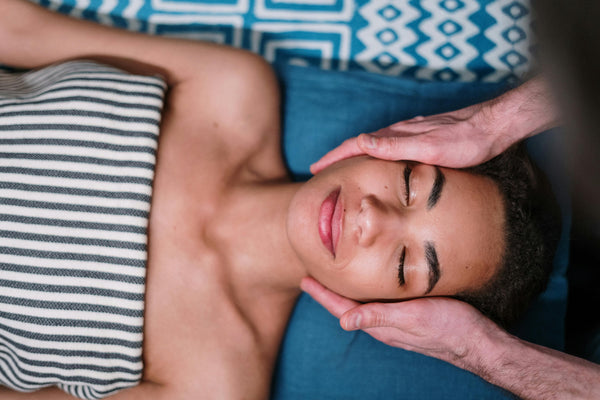
Massage
Self-care is important for so many reasons. It’s good for your mental and physical health, and it can even help you burn calories without lifting a finger!
Massage stimulates acupressure points on our bodies that activate our central nervous system, get blood flowing, and burn calories. Our muscles respond to the stimulus of massage. Depending on your age and weight, you can burn anywhere from 50 - 80 calories during a one-hour massage.
You’ll likely feel more limber and less sore after a massage, which may inspire you to take on more vigorous calorie-burning activity. Rewarding yourself with a massage is a win-win.
Cryotherapy

Whole-body cryotherapy consists of briefly exposing your whole body to dry air temperatures below −200°F. Cryotherapy is widely used as a medical treatment to help people recover from injuries. It also has anti-inflammatory, anti-analgesic, and antioxidant effects.
During cryotherapy, your entire body is cooled to below 35°F and needs to reheat itself. That reheating is a big job and burns a ton of calories. A single 3min cryotherapy session can burn between 500-800 calories!
Cryotherapy is a major calorie burn and can reduce soreness and inflammation and help you heal from injuries, all without doing a single minute of working out.
Drinking matcha tea
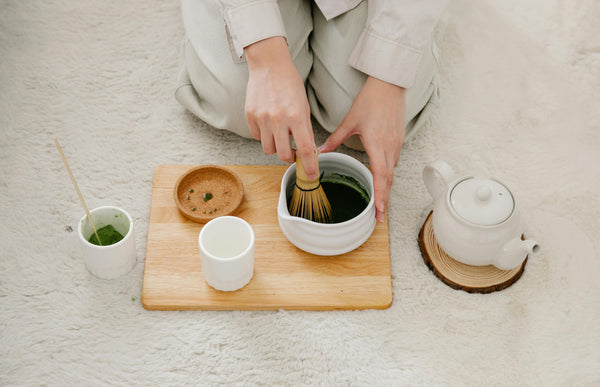
Did you know that drinking two cups a day of green tea can change the way your body processes sugar and help you lose weight? The caffeine and antioxidants known as catechins in green tea are proven to stimulate your metabolism and burn calories.
Matcha green tea has the highest concentrations of catechins of all other types of tea. The high quantities of antioxidants mixed with the amino acid l-theanine means you get tons of health benefits, help burn calories and an energy boost without the jitters and crash of coffee.
The ritual of making a cup of matcha green tea is a delicious and super relaxing way to start your day and start burning calories.
Sauna/Bath
Exposing your body to high temperatures in the sauna or a hot bath is super relaxing and restorative.
Saunas, steam rooms and hot baths have been used for centuries to help increase sports performance, improve recovery time, improve mental health and reduce the risk of cardiovascular diseases - they also burn calories!
A 30-minute sauna session can burn 300 - 500 calories, and an hour-long hot bath can burn around 150 calories. Relax, unwind, improve your health, and burn calories in a hot bath or sauna.
Swimming
There are different ways to burn calories while swimming, and some are more relaxing than others. While swimming laps in the pool can be a vigorous exercise that can burn anywhere between 500 and 900 calories an hour, taking a relaxing swim also burns calories.
Treading water or leisurely swimming burns around 230 calories per hour and is a great way to burn calories without putting stress on your joints. If you’ve ever had the chance to swim in a natural setting, you know there is nothing more relaxing than floating on your back, staring at the sky while dimming the sounds of the world and replacing them with the soothing sound of water and nature.
Going for a swim is a great way to calm your thoughts, relax your mind, and burn calories.
Kayaking/Canoeing
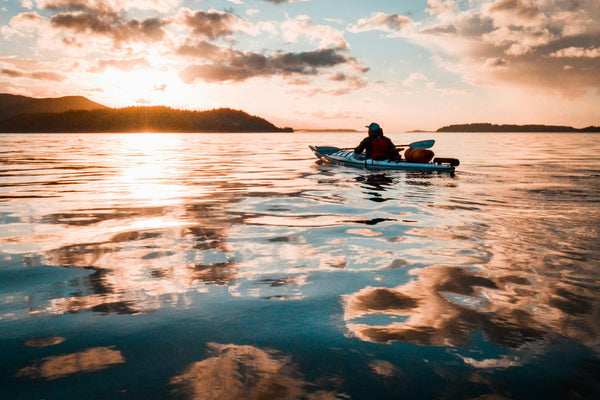
Going for a leisurely kayak or canoe adventure will burn so many more calories than you’d expect while also getting you outside and into the relaxing effects of nature.
Studies show that natural settings improve well-being and significantly decrease stress levels.
An hour of easy paddling can burn anywhere between 300 - 500 calories! Most kayaking and canoeing opportunities are in easy-going and beautiful places with views of nature. You have full control of your speed when kayaking or canoeing in calm waters, and taking in your surroundings while paddling along will make time and calories fly.
Yoga
There are many different types of yoga that you can practice—all of which lead to relaxation, health benefits, and varying amounts of calories burned.
Most yoga studios aim to make your experience a comforting one. With dimmed lights, calming music, aromatherapy, and a judgment-free mindset, yoga is one of the most relaxing ways to burn calories.
Restorative or Yin yoga is widely considered the most relaxing yoga practice. Blocks, blankets, and pillows are used to help support passive poses that help you stretch, improve circulation, and deeply relax. You’ll likely burn somewhere between 100-200 calories during a 60-minute yin yoga session.
If you choose to do a more vigorous yoga practice like Vinyasa or Ashtanga, you’ll burn somewhere between 400-600 calories and feel all the restorative effects of moving, twisting, and strengthening your body in a low-intensity setting.
Organizing
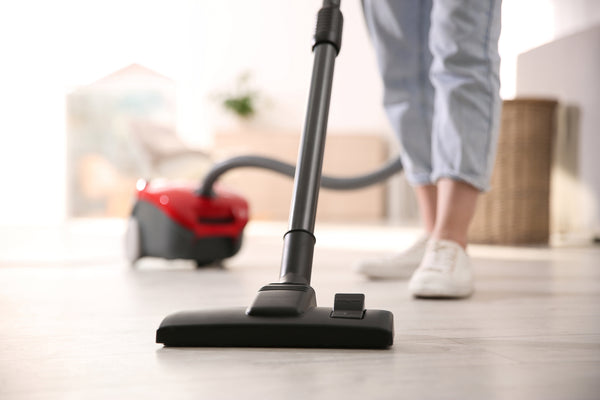
If you’re feeling overwhelmed, reorganizing your space can be a fun and relaxing way to burn calories and calm your nerves. When the spaces around us are neatly kept and well organized, our minds can be freed up to focus on more important things than “Where did I put that thing?!” or “How much dust is on my ceiling fan?!”
Sometimes, all a room needs is a little furniture rearranging to improve its flow and feel. Moving furniture can burn 300-500 calories an hour, dusting can burn 150-200 calories an hour, vacuuming can burn up to 200 calories an hour, and stripping and remaking beds can burn up to 200 calories an hour.
Even at a leisurely rate, organizing your cabinets and cleaning your house will burn calories and leave you feeling relaxed and totally freed up to enjoy some of your other favorite activities.
Carrying baby while they sleep
All parents know that carrying kids around will strengthen their muscles—especially as they grow heavier and heavier. But did you know that carrying a baby while you watch them sleep will release oxytocin in your brain and make you feel happy and relaxed?
Carrying an infant around can burn around 145 calories per hour and strengthen core, arm, leg, neck, and back muscles. If your baby is sleeping, that means they aren’t crying or fussing, and you can get some much-needed rest and relaxation.
P.S. You can drink matcha while pregnant!
Drink ice water
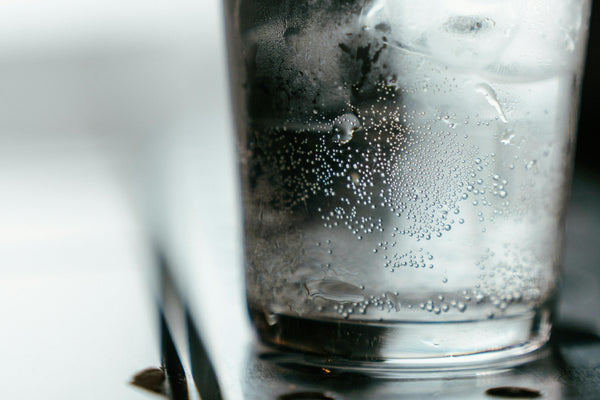
One of the laziest and most unexpected ways to burn calories is drinking ice water. When consuming liquids, our bodies prefer to regulate the temperature of the liquid so that it matches our internal body temperature. When you drink room temperature water, your body expends less energy to heat the water to your BBT (basal body temperature) than if you drink ice water. The extra energy needed when drinking ice water burns about eight calories per cup of ice water.
We’re supposed to drink between 12 and 15 cups of water a day. If you swap to ice water or iced matcha, you can burn an extra 96 - 120 calories in a day without working out.
Bottom Line
There are tons of relaxing ways to burn calories easily. Some require minimal physical exercise, while others are as easy as making a cup of green tea!
Interested in the different ways matcha green tea can improve your health?
12 Health Benefits of Green Tea for Men | Matcha and Men's Health
Matcha and Kidney Health: Is Drinking Matcha Tea Good For Kidney Health?
7 Reasons Matcha Green Tea Helps Manage Diabetes
Disclaimer: These statements in this blog post have not been evaluated by the Food and Drug Administration. The information provided here is for educational purposes only and should not be considered medical advice. It's essential to consult with a qualified healthcare professional before making any dietary or lifestyle changes.
Resources:
Pang, Y., Wang, K., Chen, S., Huang, T., Zhang, M., Zhang, B., & Yu, J. (2021). Massage for simple obesity: A protocol for systematic review. Medicine, 100(6), e24336. https://doi.org/10.1097/MD.0000000000024336
Lombardi, G., Ziemann, E., & Banfi, G. (2017). Whole-Body Cryotherapy in Athletes: From Therapy to Stimulation. An Updated Review of the Literature. Frontiers in physiology, 8, 258. https://doi.org/10.3389/fphys.2017.00258
Jurgens, T. M., Whelan, A. M., Killian, L., Doucette, S., Kirk, S., & Foy, E. (2012). Green tea for weight loss and weight maintenance in overweight or obese adults. The Cochrane database of systematic reviews, 12(12), CD008650. https://doi.org/10.1002/14651858.CD008650.pub2
Podstawski, R., Borysławski, K., Clark, C. C. T., Choszcz, D., Finn, K. J., & Gronek, P. (2019). Correlations between Repeated Use of Dry Sauna for 4 x 10 Minutes, Physiological Parameters, Anthropometric Features, and Body Composition in Young Sedentary and Overweight Men: Health Implications. BioMed research international, 2019, 7535140. https://doi.org/10.1155/2019/7535140
Lee, B. A., & Oh, D. J. (2015). Effect of regular swimming exercise on the physical composition, strength, and blood lipid of middle-aged women. Journal of exercise rehabilitation, 11(5), 266–271. https://doi.org/10.12965/jer.150242
Gomes, B. B., Mourão, L., Massart, A., Figueiredo, P., Vilas-Boas, J. P., Santos, A. M., & Fernandes, R. J. (2012). Gross efficiency and energy expenditure in kayak ergometer exercise. International journal of sports medicine, 33(8), 654–660. https://doi.org/10.1055/s-0032-1301907
Benz, A. B. E., Gaertner, R. J., Meier, M., Unternaehrer, E., Scharndke, S., Jupe, C., Wenzel, M., Bentele, U. U., Dimitroff, S. J., Denk, B. F., & Pruessner, J. C. (2022). Nature-Based Relaxation Videos and Their Effect on Heart Rate Variability. Frontiers in psychology, 13, 866682. https://doi.org/10.3389/fpsyg.2022.866682
Tsopanidou, A. Α., Venetsanou, F. D., Stavridis, I. S., Paradisis, G. P., & Zacharogiannis, E. G. (2020). Energy expenditure during a Vinyasa yoga session. The Journal of sports medicine and physical fitness, 60(8), 1110–1117. https://doi.org/10.23736/S0022-4707.20.10821-1
Esposito, G., Setoh, P., Yoshida, S., & Kuroda, K. O. (2015). The calming effect of maternal carrying in different mammalian species. Frontiers in psychology, 6, 445. https://doi.org/10.3389/fpsyg.2015.00445
Boschmann, M., Steiniger, J., Hille, U., Tank, J., Adams, F., Sharma, A. M., Klaus, S., Luft, F. C., & Jordan, J. (2003). Water-induced thermogenesis. The Journal of clinical endocrinology and metabolism, 88(12), 6015–6019. https://doi.org/10.1210/jc.2003-030780







